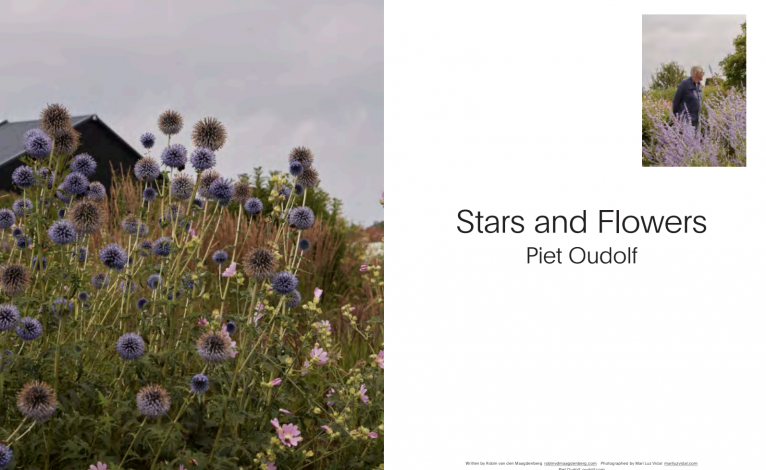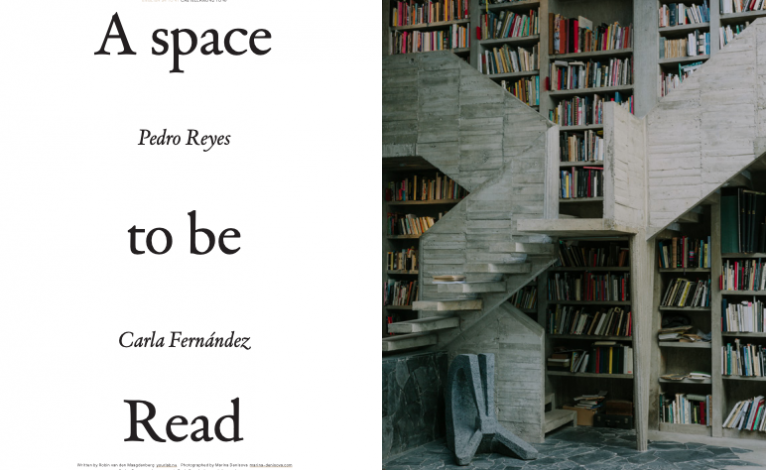Huis Sonneveld | Openhouse Magazine
Inside I drift from one room to the next. From the sofa I look at the dining-room, an open space in the wall unit also offering a view of the hall beyond. The house has a strong frame, carrying itself effortlessly, without any need for additional supporting walls or façades. Even the furniture consists of frames and seems transparent, adding to the overall sense of uncorporeality. Still more striking than the see-through spaces and the furniture that was often made-to-measure for the family by Thonet and Gispen, is the play of light and shade that rustles thoughout the house, dances on the floors, fills the glasses on the table and reaches into the kitchen cupboards.
17 februari 2022
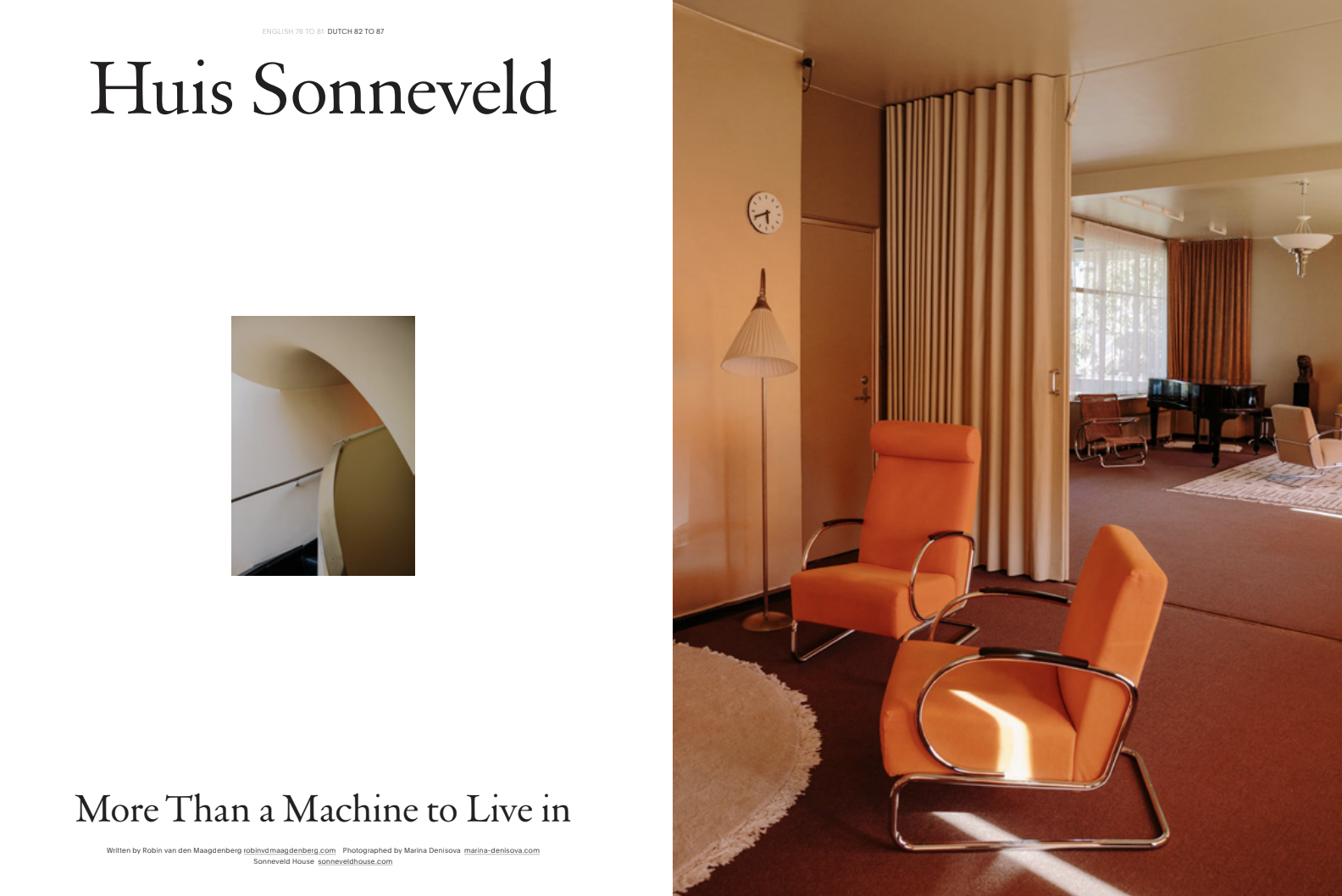
Huis Sonneveld
On a sunny day I travel to Rotterdam, wearing a face mask. I’m paying a visit to Huis Sonneveld, a modernist villa dating from the 1930s, built in the style of Het Nieuwe Bouwen. Here one gets an impression of how the enlightened lived almost a century ago. The house was commissioned by A.H. Sonneveld and built in accordance with Le Corbusier’s statement ‘A house is a machine to live in’ – a functionalist architectural style that considered ornamentation to be ‘criminal’, and a total waste of labour. Sonneveld was an adherent of this new style of building, which simultaneously advanced a new way of living. Functionalism wasn’t merely a matter of aesthetics, but also a utopian vision of society; an attempt to transcend the horrors of World War I by creating better living conditions for all. Technological innovations provided functionalist design with the means to reproduce these improvements on a grand scale – not only for the wealthy few but for the working classes as well. This vision is clearly apparent in the spatial arrangement of Huis Sonneveld. While servant’s quarters were traditionally hidden in gloomy basements or separate shacks, here personnel were also entitled to a view of the skies, a private terrace, the use of a bath and a mirror.
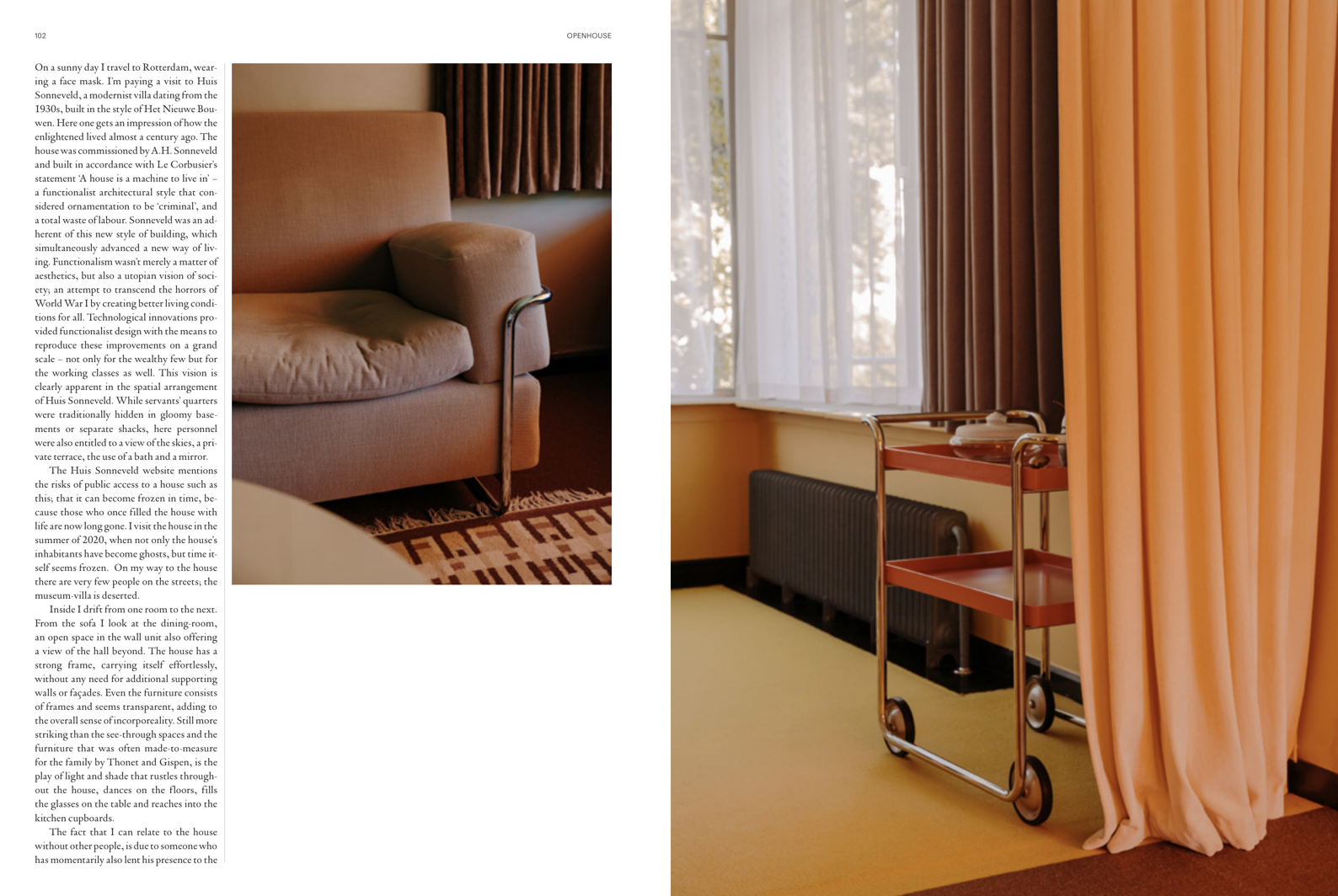
The Huis Sonneveld website mentions the risks of public access to a house such as this; that it can become frozen in time, because those who once filled the house with life are now long gone. I visit the house in the summer of 2020, when not only the houses’ inhabitants have become ghosts, but time itself seems frozen. On my way to the house there are very few people on the streets, the museum-villa is deserted.
Inside I drift from one room to the next. From the sofa I look at the dining-room, an open space in the wall unit also offering a view of the hall beyond. The house has a strong frame, carrying itself effortlessly, without any need for additional supporting walls or façades. Even the furniture consists of frames and seems transparent, adding to the overall sense of uncorporeality. Still more striking than the see-through spaces and the furniture that was often made-to-measure for the family by Thonet and Gispen, is the play of light and shade that rustles thoughout the house, dances on the floors, fills the glasses on the table and reaches into the kitchen cupboards.
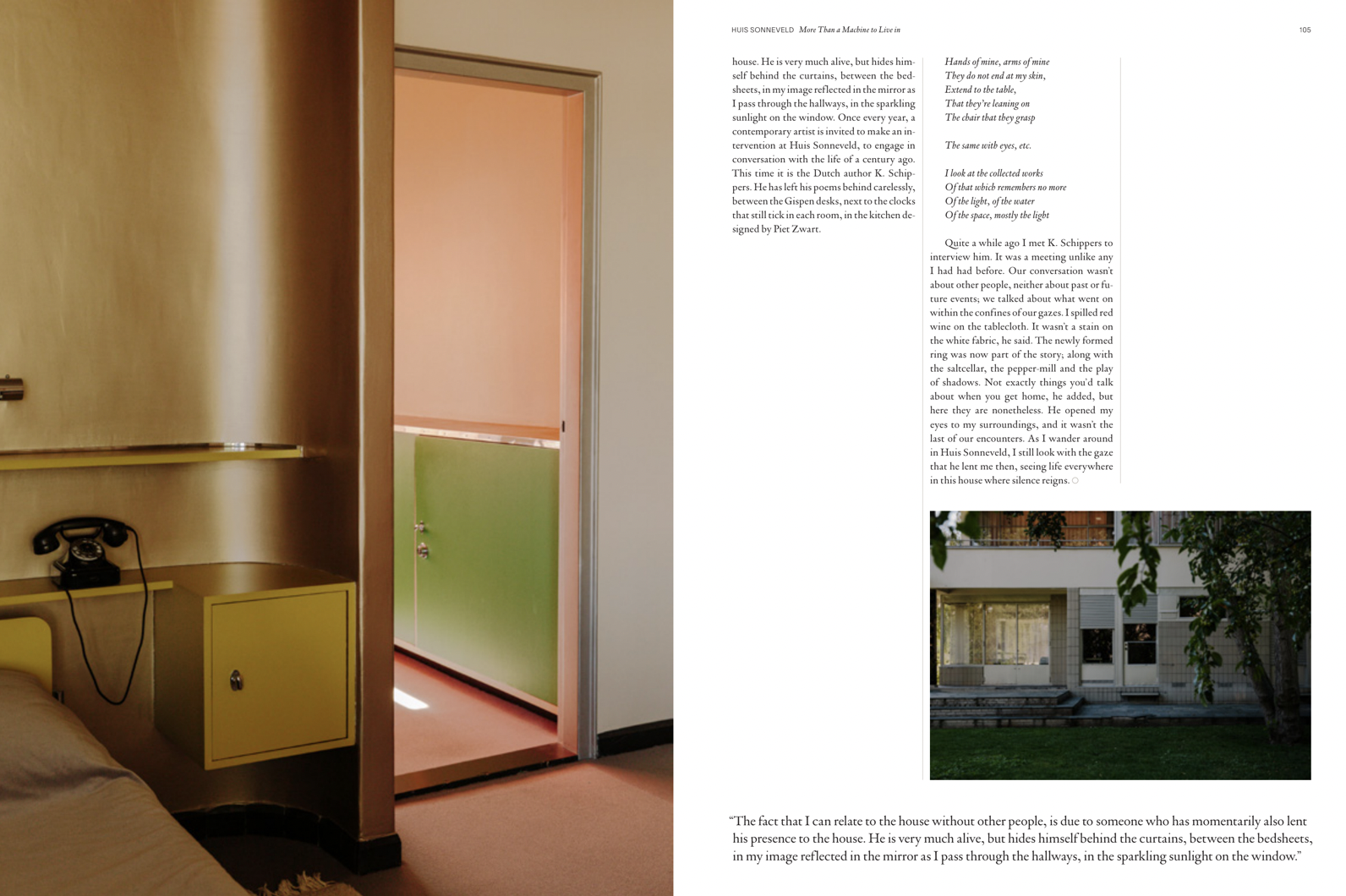
The fact that I can relate to the house without other people, is due to someone who has momentarily also lent his presence to the house. He is very much alive, but hides himself behind the curtains, between the bedsheets, in my image reflected in the mirror as I pass through the hallways, in the sparkling sunlight on the window. Once every year, a contemporary artist is invited to make an intervention at Huis Sonneveld, to engage in conversation with the life of a century ago. This time it is the Dutch author K. Schippers. He has left his poems behind carelessly, between the Gispen desks, next to the clocks that still tick in each room, in the kitchen designed by Piet Zwart.
Hands of mine, arms of mine
They do not end at my skin,
Extend to the table,
That they’re leaning on
The chair that they grasp
The same with eyes, etc.
I look at the collected works
Of that which remembers no more
Of the light, of the water
Of the space, mostly the light
Quite a while ago I met K. Schippers to interview him. It was a meeting unlike any I had had before. Our conversation wasn’t about other people, neither about past or future events; we talked about what went on within the confines of our gazes. I spilled red wine on the tablecloth. It wasn’t a stain on the white fabric, he said, the newly formed ring was now part of the story. Along with the saltcellar, the pepper-mill and the play of shadows. Not exactly things you’d talk about when you get home, he added, but here they are nonetheless. He opened my eyes to my surroundings, and it wasn’t the last of our encounters. Also as I wander around in Huis Sonneveld, I still look with the gaze that he lent me then, seeing life everywhere in this house where silence reigns.
